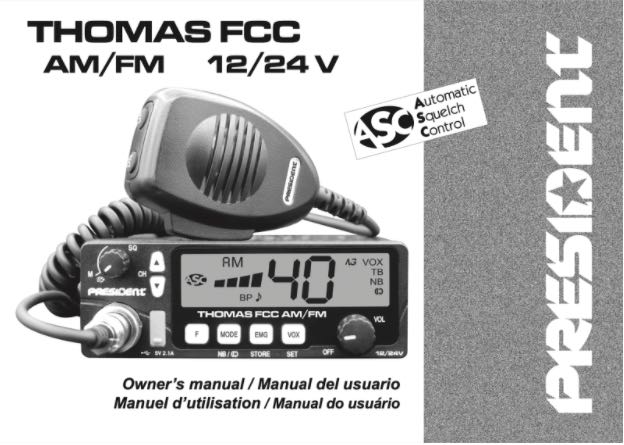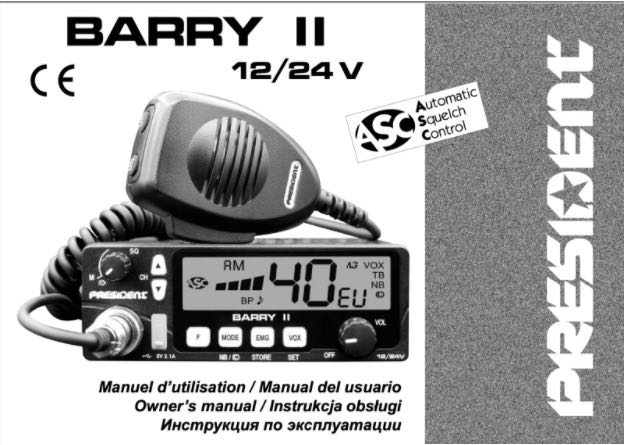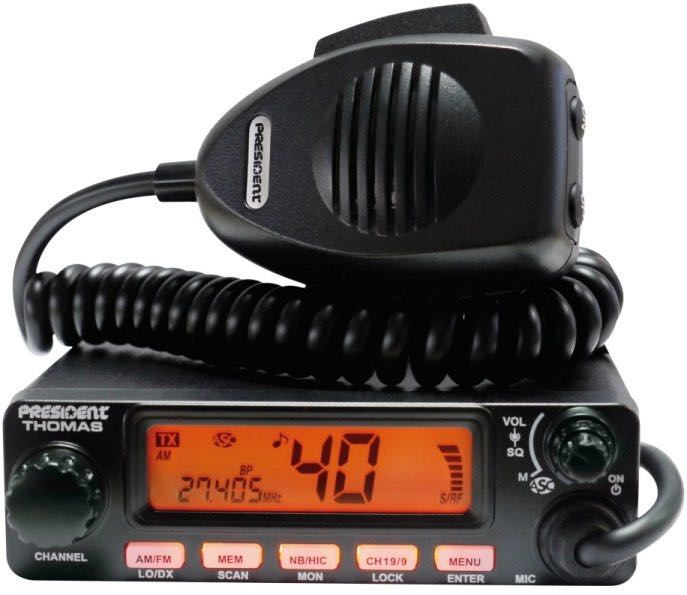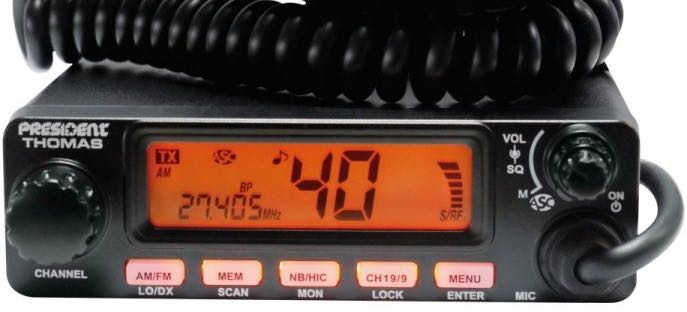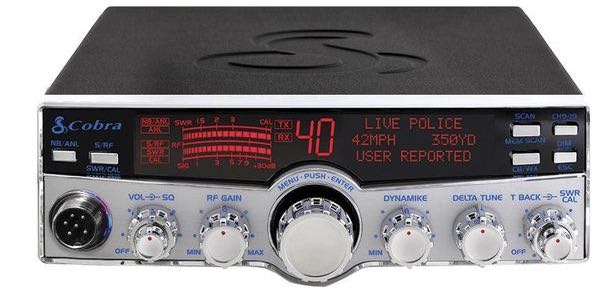
Many thanks to SWLing Post contributor, Peter Laws, who shares the following guest post:
Adding FM as an allowable mode on CB seems long overdue
by Peter Laws
The FCC’s recent action to add FM as an allowable mode on CB seems long overdue. See the final rule as published in the Federal Register on September 28, 2021: https://www.federalregister.gov/documents/2021/09/28/2021-19399/review-of-the-commissions-personal-radio-services-rules
Looking through old CB and amateur radio magazines from the 1970s it appears that the FCC considered allowing FM around the time that the service expanded to 40 channels. The FCC being the FCC took their usual “what’s the least we can do to make this issue go away?” path and just added 17 new channels starting at the beginning of 1977. Other than that expansion, they didn’t really change anything. There were incumbents on the spectrum re-allocated to CB, too, and licensees were given a 2-year grace period to vacate what was to become channels 24, 25, and 26 and up.
Personally, your humble reporter is happy that the Commission has finally allowed FM on CB. This should be a big improvement for people who are actually trying to communicate. The reduction of static alone will be welcome. There are claims that AM has better range than FM at the same power levels. I suspect that people who make that claim are confusing AM broadcast (on MF) to FM broadcast (on VHF) but the proof will be in the pudding once we start to see new FM CBs hit the market.
And what about that? When will we see new radios? It should happen pretty quickly, almost certainly by the end of the year “Christmas” rush assuming no supply chain delays. If you are unfamiliar with CB outside of North America, you may be surprised to find that radios that will meet the new FCC rules already exist. I don’t mean those quasi-legal “Export” radios that many are fond of, but main-stream consumer radios from vendors like Midland, Cobra (the petitioner that got FM approved), Uniden, and President.
If you are an amateur licensee, you may be familiar with CEPT, the Conférence européenne des administrations des postes et des télécommunications. That’s an association of the various FCC equivalents (and USPS equivalents) in each of the European nations. In the amateur world, CEPT has a simple reciprocal licensing regime that allows US amateurs to operate in CEPT countries and amateurs from CEPT countries to operate in the US without any extra paperwork. CEPT also works to harmonize radio and other telecommunication rules regimes between the different nations to make it easier for vendors to build equipment acceptable to all and making the market bigger.
For the most part — there are exceptions — CEPT nations have all adopted the same CB radio band plan and rules. Here’s the surprise: they are nearly identical to the FCC rules! Same 40 channels, even with the weirdness between channels 22 and 25 and the skipped channels for radio control, the 4 W power output, etc. The only big difference is that CEPT allows FM in addition to AM and SSB.
So a CEPT-spec radio will meet the new FCC rules today. A vendor will simply need to make certain that their product’s firmware and other components really do match US requirements, get it tested by a contract certification facility (those facilities will also need to update their FCC CB test procedures for the addition of FM), and file the paperwork with the Commission. This is far simpler than actually having to engineer the addition of FM to an existing AM-only product.
One jurisdiction that has their own rules, in addition to allowing CEPT rules, is the United Kingdom. When CB was legalized in the UK in 1981, the government allowed FM (only) on 40 channels that start at 27.60125 MHz and go up every 10 kHz to 27.99125 MHz. A decade or two after that, the UK also made operation of CEPT-spec CB radios legal with the result being the UK CBers have 80 legal channels available – 40 CEPT channels with all three modes and an additional 40 with FM only.
Don’t expect to see “multi-norm” radios in the US like those marketed in Europe. Multi-norm units allow for switching between CEPT, UK, and other national channel/power/mode layouts, often with only a few simple button presses. Historically, the FCC has been reluctant to allow radios that have user-adjustable operating parameters outside of the Amateur Radio Service so watch for firmware on US versions to be locked down.
Undoubtedly, some will claim that this is all being done so that Cobra (the petitioner in this case) can sell more radios. What is the problem with this? The new rules do not change anything with regard to the current rules. If you have a legal AM or AM/SSB radio now, you will still have a legal AM or AM/SSB radio after October 28, 2021. And after that, it will be legal to sell an FCC-approved radio that includes FM in addition to AM or AM and SSB. That’s right – radios may include FM but must have AM.
Generally speaking, I am one that is not in favor of deregulation. But if you look through old FCC regulations, either in Part 97 (Amateur) or Part 95 (CB, GMRS, et al), there really were a lot of silly regulations. But only silly by the time they went away; at the time they were created they were, or were at least thought to be, vital. Time showed that some of those rules really weren’t vital and many have been removed. One of those rules was the 250-km limit on CB communications. It’s likely that at the time the rule was promulgated it was intended to reinforce that Class D CB (as it was known then) was intended as a short-range communications system. The ionosphere made sure that the “DX rule” was nearly impossible to enforce as even regular, law-abiding citizens could and did answer a “breaker” who ended up being 1000 miles away! In Cobra’s initial 2017 petition to the FCC, they requested abolition of the distance limit and the Commission agreed but in that same Report and Order, they declined to add FM. Cobra petitioned for reconsideration of that point (FM) and here we are.
While there are still allocations for other services between channel 40 and the start of the 10-m amateur band, and while there are still licensees there, it is hard to imagine that those licensees are actually using that spectrum. Free-banders, yes, licensed stations, unlikely. A quick tour of the Commission’s Universal Licensing System shows a number of licensees in the spectrum between channel 40 (27.405 MHz) and the start of the amateur allocation at 28.0 MHz. Most, however, appear to be dealers, consultants, and manufacturers in the communications business that are required to have blanket licenses for any band that they intend to use. As a result, there are many licenses that cover 25-50 MHz (and many other bands) inclusive for demonstration purposes.
So where is this story going? Why not petition the FCC to allow UK-spec radios to be used in the US? Literally, almost no one is using this spectrum aside from freebanders that may already be there. The reason that the Congress reserved to itself the ability to regulate the radio spectrum, later delegated to the FCC, was to ensure that the spectrum was used in the most efficient manner possible and to prevent interference. Since almost no one uses this patch of spectrum at 27 MHz, why not let it become an expanded “national park” for hobbyists?
If you are thinking, “well, if the FCC does that for 27 MHz, why not new bands in other, largely-abandoned spectrum?” This reporter’s answer is “sure, why not?” This is, after all, how amateurs got bands at 630 and 2200 meters – the spectrum was largely abandoned. WL2XUP is an Part 5 experimental station that is transmitting various digital modes between 40.66 and 40.7 MHz. This roughly aligns with 8-meter amateur allocations that are popping up in other jurisdictions. Maybe this 8-meter experiment, too, will pave the way to a new allocation like the Part 5 operations did on the new MF and LF bands mentioned above.
It’s a brave new world in CB.
Peter Laws has been licensed as a ham since 1991 (after a false start c.1978), has listened to scanners since 1982, was on CB in the late 1970s, and started DXing on MW and SW in the mid-1970s. He edits columns in both LWCA’s Lowdown and IRCA’s DX Monitor. He lives in Norman, Oklahoma, with his wife, several small doggoes, and many radios and antennas.
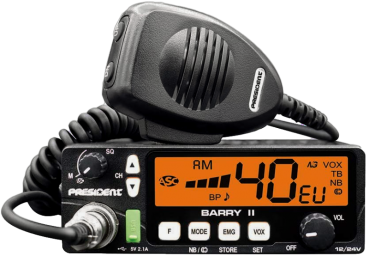 Many thanks to SWLing Post contributor, Peter Laws, who shares the following guest post:
Many thanks to SWLing Post contributor, Peter Laws, who shares the following guest post:
